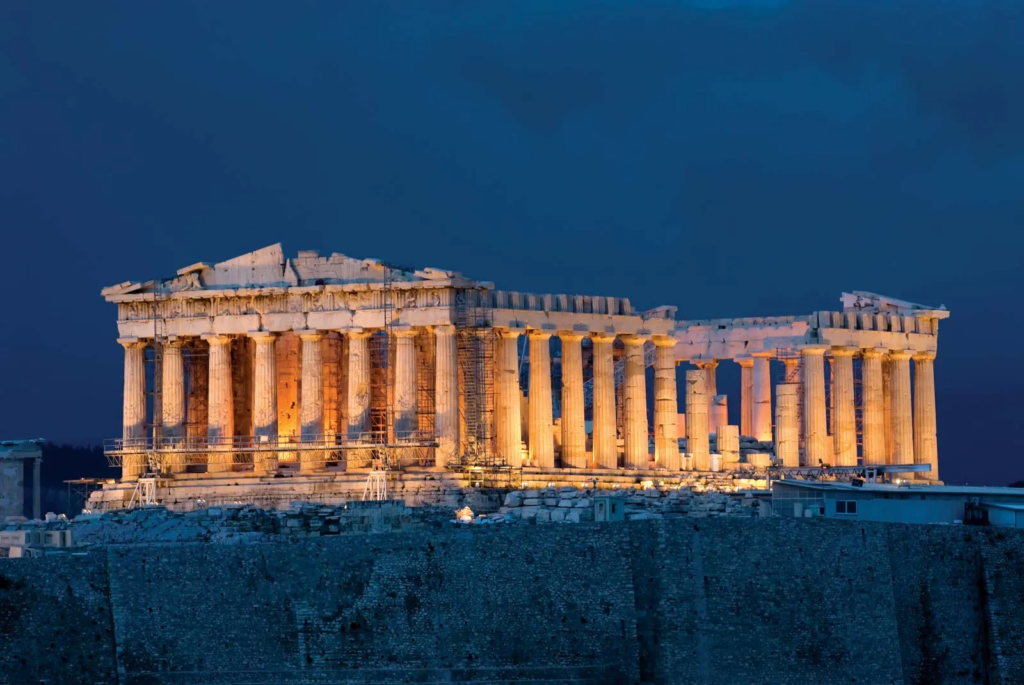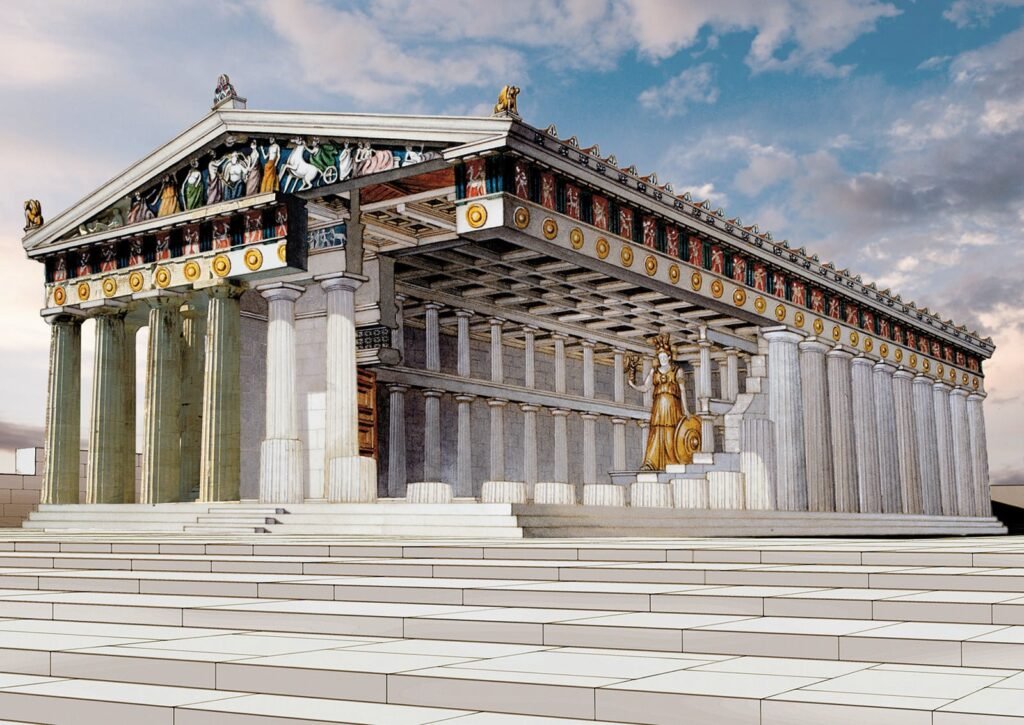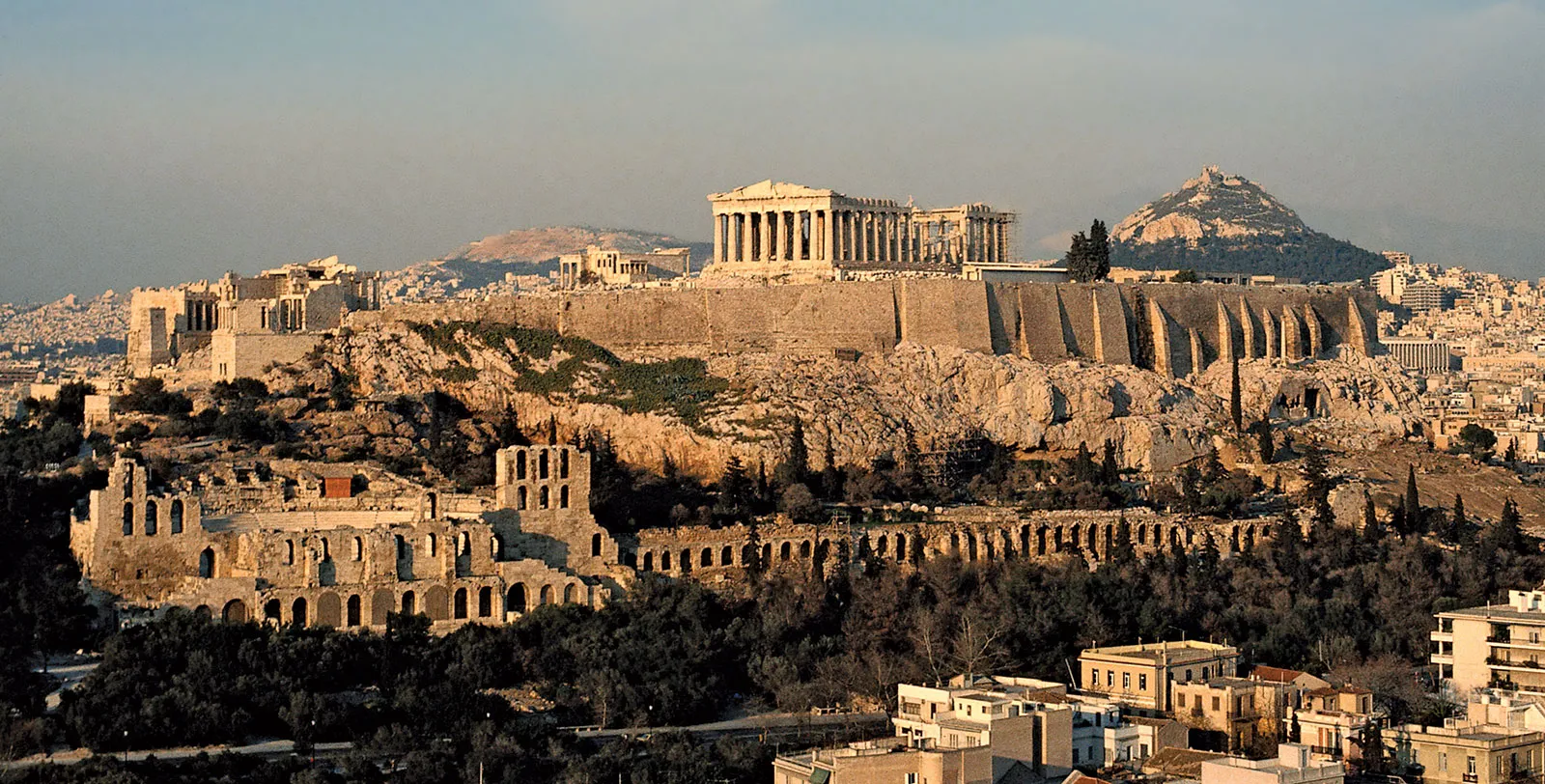Athens
Athens is associated with several Greek myths, particularly the contest for the patronage of the city between Athena, the goddess of wisdom and Poseidon, the god of the sea. According to mythology, the city of Athens was named after the goddess Athena. Athena and Poseidon competed to become the city’s patron. Poseidon struck the ground with his trident, creating a saltwater spring (or, in some versions, a horse). Athena however, offered the olive tree, a symbol of peace, prosperity and sustenance. The people of the city (or the legendary king Cecrops, depending on the version) chose Athena’s gift and the city was named after her. The olive tree became a central symbol of Athens, representing the wisdom and success of the city.

Athens is renowned for its rich architectural history, which spans several millennia, from ancient Greece to modern times. The city’s architecture reflects the cultural, political, and artistic developments of various eras. Athens is a city that wears its history on its sleeves. As the capital of Greece, it has evolved from a powerful city-state in ancient times to a modern metropolis. Yet, despite the passage of time, Athens remains a living museum, where ancient monuments and modern structures coexist, reflecting the city’s rich architectural heritage. From the grandeur of its classical temples to the neoclassical elegance of its modern buildings, Athens’ architecture is a testament to its long and storied history.
The Parthenon, a magnificent temple on the Acropolis of Athens, was dedicated to Athena. Constructed between 447 and 432 BCE during the Golden Age of Athens, it showcased the city’s power and devotion to their patron goddess. The Parthenon housed a massive statue of Athena made of gold and ivory, emphasising her importance to the Athenians. The Parthenon is an exceptional example of ancient Greek architecture, specifically of the Doric order, though it also incorporates Ionic elements. Its precise proportions and elegant design are renowned for embodying the ideals of balance, harmony, and beauty in classical architecture.


Throughout the years many builders have used 3DX to recreate Athens’ legendary landmarks. Within these recreations, people can experience the splendour of the Parthenon, the Acropolis, and the ancient Agora as if they were walking through history itself. Often the blend of history and mythology adds further depth to these spaces, offering a unique exploration of Athens’ rich cultural heritage and providing visitors a journey of grandeur in an immersive and truly interactive way.
This immersive experience not only allows users to admire Athens’ architectural brilliance but also encourages them to engage with the myths and stories that have shaped the city’s identity for millennia.


One such recreation is Mount Olympus by Alikiinchains. The room stands as a beautiful homage to Greek mythology and culture. This 3DX masterpiece not only showcases the mythical home of the gods but also reflects Aliki’s deep connection to her Greek heritage. By meticulously bringing to life the grandeur and mystique of Mount Olympus, she honours the stories of ancient Greece, where deities like Zeus, Hera, and Athena were believed to reside. The attention to detail in such a recreation speaks to both the historical and emotional significance of Greek myths, offering visitors a visual journey into a world where gods walked among mortals. Her dedication to capturing the spirit of Greece in her work is not just a celebration of her country’s mythology but also a way of preserving and sharing these timeless stories with visitors of her room.
Do you know about other builds inspired by ancient Athens that you’d like to see featured in the gazette? Let us know.
By Eskarina

Superb article, Eskarina. Very interesting and informative.
Wonderful piece Eskarina.
But I think the Greeks want their marbles back 😛